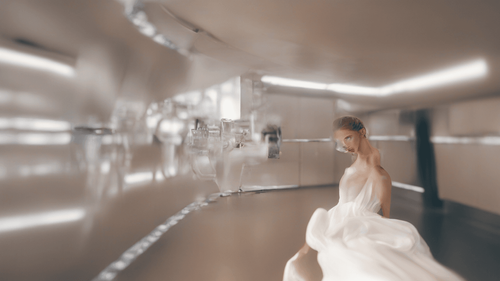
In this article, we explore the revolutionary technique of stable diffusion super resolution, its applications, benefits, and how it is shaping the future of image enhancement.
Introduction
In the dynamic world of image processing and enhancement, the concept of stable diffusion super resolution has emerged as a revolutionary technique that promises to transform the way we perceive and utilize images. With its advanced algorithms and unparalleled capabilities, stable diffusion super resolution holds the potential to enhance image clarity to new heights. In this comprehensive article, we delve deep into the realm of stable diffusion super resolution, exploring its applications, benefits, and the profound impact it has on the field of image processing.
Stable Diffusion Super Resolution: A Closer Look
Understanding Stable Diffusion Super Resolution
Stable diffusion super resolution, often abbreviated as SDSR, is an innovative computational imaging technique that aims to improve the resolution and clarity of images. Unlike traditional methods that rely solely on capturing more data through hardware advancements, SDSR employs complex algorithms to enhance image details by intelligently inferring and filling in missing information.
How Stable Diffusion Super Resolution Works
At its core, SDSR utilizes a combination of diffusion processes and iterative algorithms to estimate and enhance finer details in low-resolution images. The process involves creating diffusion maps to capture image features and then applying diffusion operators to enhance these features. This iterative approach gradually refines the image, leading to a significant improvement in clarity and resolution.
Applications of Stable Diffusion Super Resolution
Stable diffusion super resolution finds its application in a wide range of fields, including:
- Medical Imaging: Enhancing medical images can lead to more accurate diagnoses and treatment planning.
- Satellite Imagery: Improved satellite imagery aids in better environmental monitoring and disaster management.
- Security and Surveillance: Crisp, clear images enhance the effectiveness of surveillance systems.
- Art Restoration: SDSR can reveal hidden details in old artworks, contributing to their preservation.
Benefits of Stable Diffusion Super Resolution
Preservation of Visual Quality
SDSR excels at maintaining the visual quality of images while enhancing their resolution. This preservation ensures that important details are not lost during the enhancement process, making the technique particularly valuable in critical applications like medical imaging and forensic analysis.
Reduced Hardware Dependency
Unlike hardware-intensive methods that require costly upgrades, SDSR achieves remarkable results through computational algorithms. This reduces the need for frequent hardware enhancements, making it a cost-effective solution for various industries.
Enhanced Data Analysis
High-resolution images generated by SDSR provide researchers and analysts with clearer data for their studies. This leads to more accurate analyses and informed decision-making across domains.
Realistic Visuals in Entertainment
In the entertainment industry, stable diffusion super resolution can breathe new life into old movies or video games by enhancing their graphics and making them compatible with modern high-resolution displays.
Simplified Workflows
By automating and optimizing the image enhancement process, SDSR simplifies workflows, allowing professionals to focus on interpreting results rather than spending excessive time on manual adjustments.
Implementing Stable Diffusion Super Resolution
Choosing the Right Algorithm
Several algorithms exist for stable diffusion super resolution, each with its strengths and limitations. It's crucial to select an algorithm that aligns with the specific requirements of your application.
Data Preprocessing
Before applying SDSR, thorough data preprocessing is essential. This may involve noise reduction, image alignment, and other steps to ensure the best possible input for the enhancement process.
Parameter Tuning
Fine-tuning algorithm parameters can significantly impact the quality of the enhanced images. Iterative adjustments and testing are necessary to achieve optimal results.
Integration with Existing Systems
Integrating SDSR into existing imaging systems requires careful consideration of compatibility, computational resources, and real-time processing capabilities.
Frequently Asked Questions
What distinguishes stable diffusion super resolution from traditional upscaling methods?
Stable diffusion super resolution goes beyond simple upscaling by utilizing advanced algorithms to generate high-resolution images with enhanced details, preserving image quality in the process.
Is SDSR suitable for real-time applications like video streaming?
While SDSR involves computational processes that may introduce some latency, advancements are being made to optimize the technique for real-time applications, making it a viable option for video enhancement.
Are there any limitations to stable diffusion super resolution?
While SDSR is highly effective, it may face challenges with certain types of images, extreme noise levels, or complex textures. However, ongoing research aims to address these limitations.
Can SDSR be combined with other image enhancement techniques?
Absolutely. SDSR can complement techniques like denoising, deblurring, and color correction, leading to even more impressive results.
How does stable diffusion super resolution impact AI and machine learning applications?
SDSR contributes to the availability of high-quality training data for AI models, enhancing their ability to understand and interpret visual information.
What does the future hold for stable diffusion super resolution?
As computational power continues to increase, SDSR is poised to become an integral part of various industries, revolutionizing how we perceive and utilize images.
Conclusion
In a world where images play a crucial role in communication, analysis, and decision-making, stable diffusion super resolution stands as a beacon of technological advancement. Its ability to enhance image clarity while preserving visual quality opens up new avenues of exploration and innovation. From medical diagnoses to satellite imagery and beyond, SDSR is rewriting the rules of image enhancement and shaping the future of how we interact with the visual world.
So, whether you're a medical professional seeking clearer insights or an artist restoring masterpieces, stable diffusion super resolution offers a transformative solution that bridges the gap between imagination and reality. Embrace this revolutionary technique and unlock a new dimension of image clarity and detail.
"Witness the power of stable diffusion super resolution as it unveils the hidden beauty within pixels, enriching our visual experiences like never before."